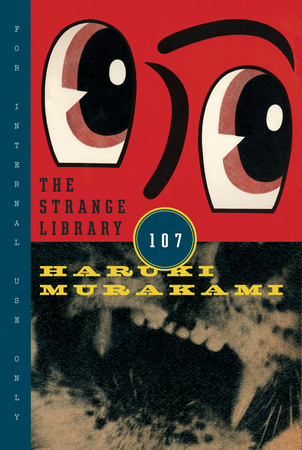I knocked. It was just a normal, every day knock, yet it sounded as if someone had whacked the gates of hell with a baseball bat. It echoed ominously in the corridor. I turned to run, but I didn't actually take a step, even though I wanted to. That wasn't the way I was raised. My mother taught me that if you knock on a door, you have to wait there until someone answers.Knowing that I love me some Haruki Murikami, my girls got me The Strange Library as a Mother's Day gift this year. They know me so well. What they didn't know was that this odd little book, which takes less than a half hour to read, has the look and feel of a children's picture book; if you don't mind your children reading books about a crazy old man who wants to eat their creamy brains.
At the same time, my anxiety had turned into an anxiety quite lacking in anxiousness. And any anxiety that is not especially anxious is, in the end, an anxiety hardly worth mentioning.Looking at other reviews, I see that different countries have differently illustrated editions (mine was done in a gorgeous retro style by Chip Kidd), and all share a common tale populated with familiar Murikami motifs: mazes and mysteriously helpful girls and the return of the Sheep Man. Reading any Murikami gives me a frisson of recognition; a jarring realisation that I share some subconscious material with this man from a very different culture on the other side of the world. Even though The Strange Library is very short and simple, this frisson yet applies, and the illustrations only enhance the effect.
Like a blind dolphin, the night of the new moon silently drew near.This book isn't going to be for everyone – it may indeed be pointless to anyone who hasn't seen a stranger side of the Sheep Man – but it totally worked for me. Thanks girls!
My edition opens like this:
While I see that the British have an old fashioned library book cover:
And the Germans get this cool cover:





